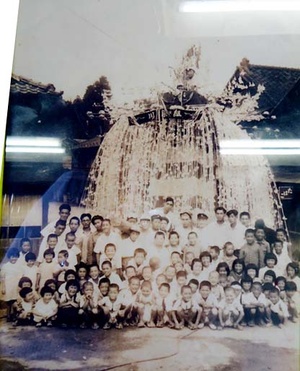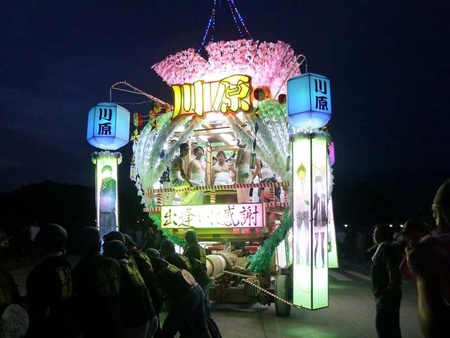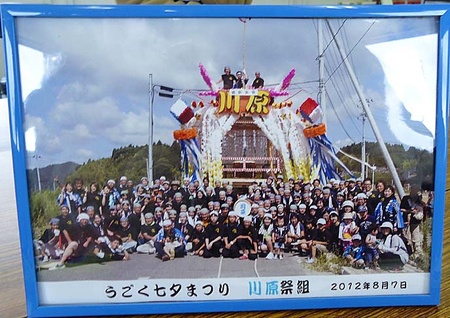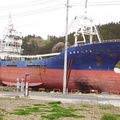Read part 4 >>
5. Efforts to maintain the Tanabata tradition
Since he was a child, Yoshikatsu Sasaki participated in the summer festival called “Ugoku Tanabata Matsuri”, which is celebrated on August 7 of each year in the city of Rikuzentakata (RT), Iwate Prefecture.
After the tsunami, he was in charge of rebuilding this tradition with ten friends, and is responsible for its organization. They all lived in a neighborhood of the city called Kawaramachi Town, which was destroyed by water. Only one building remained standing, and it is where meetings are held to discuss the Festival, and where the corresponding interview took place.
After the disaster, Mr. Sasaki decided to continue with the Tanabata Matsuri. Many people questioned their decision because there are still other needs: eating, clothing, having a home. For many, those basic questions must first be satisfied.
But for him, the Festival is not only in their brain, but in their body because it is a celebration that they have participated in since they were children. Every time he meets with his friends to discuss the preparation for Tanabata, he has the feeling that they have gone one step further. He thinks that if that feeling is repeated every year with the memories that it implies, then that feeling and emotion will help them move forward.
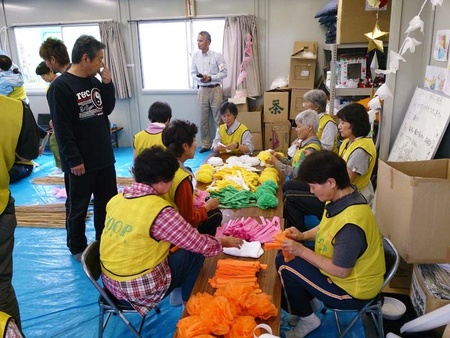
Preparations for the Festival on August 7, 2013. (Photo by Murakami Minoru, Member of the Kawara Matsuri-gumi)
At the Festival, floats that are built and decorated in each neighborhood of the city parade and on top of them, a group of people plays Japanese music called “ ohayashi ”, with drums and flutes. After the tsunami all the floats were destroyed. That year the Kawaramachi group carried out the tradition with only music in the place where the catastrophe occurred. By 2012 they were able to build the floats again.
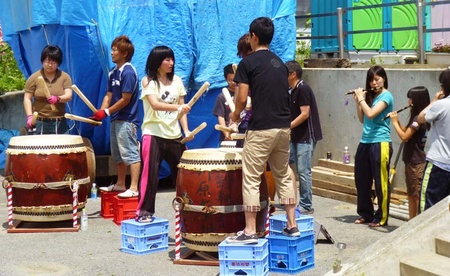
Preparations for the Festival on August 7, 2013. (Photo by Murakami Minoru, Member of the Kawara Matsuri-gumi)
The Tanabata Matsuri is very loved by the community. Most of those who participate are lifelong friends. Everyone knows each other. Mr. Sasaki and his companions strive to ensure that the Festival does not end. It is a tradition from more than 300 years ago and they want to maintain it for the good of the community.
“The most important thing for that is to think, what can we do to get more people to join?”, asks the person in charge of this Festival. It is difficult to continue it if there are few of them. Furthermore, most of those who participate in this tradition live in temporary homes. That's why they have to think about what to do so that all of them can travel to the place where it takes place, in the lower part of the city.
In these two years, the number of people helping at the Festival was maintained. And the young people who travel to the city to collaborate do not consider themselves volunteers, but rather as part of those responsible for Tanabata. “They are the Festival,” says Mr. Sasaki. When a new person participates in the event, they are considered a member of the community, not a volunteer. That feeling also motivates them to return every year.
And they not only welcome people from other Prefectures in Japan as members, but also foreigners. For example, last year a young man from Australia joined the Festival. In one of the photos from the 2012 Tanabata you can see the entire group smiling in front of one of the floats.
Another of the big problems that arise is how to get young people to participate. Especially thinking about future generations. Because many older people cannot participate due to their advanced age, and most families with children have left the city. So if young people don't participate, who is going to be in charge of organizing the Festival?
There are young people from universities in Tokyo and other cities in Japan who travel to RT to volunteer. The Kawaramachi group hopes that the bond will be strengthened during their visits and that they will be able to join the tradition and eventually be able to continue it for generations to come.
Thus continue the efforts of the group of friends from Kawaramachi who, despite adversity, fight to maintain a tradition to unite the community in these times of need.
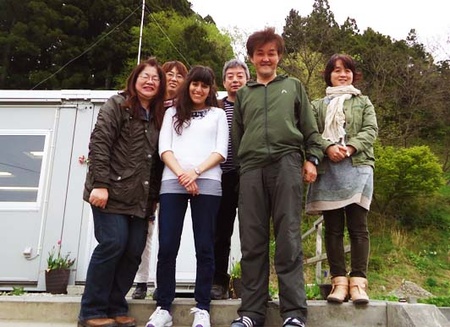
Photo we took as a group at the entrance of the building that was left in Kawaramachi, where they hold meetings to discuss issues related to Ugoku Tanabata. (Left to Right: Yuko Kikuchi, Keiko Okamoto, María Laura Martelli, Yoshikatsu Sasaki, Junichi Kikuchi, Mikiko Nakamura) (Photo by M.Laura Martelli G.)
© 2014 María Laura Martelli Giachino


